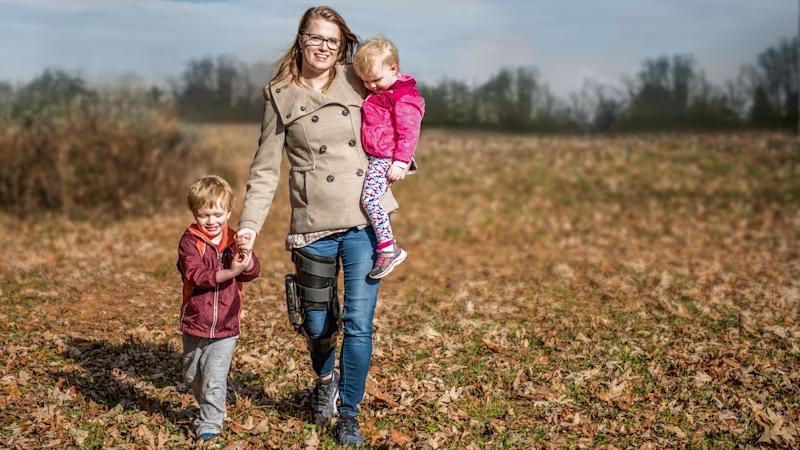Ligament instability in the ankle joint
The therapy for ligament instability in the foot and ankle joint depends on the cause and degree of severity. Phased treatment with an orthosis is indispensable for patients with a torn ligament.
Causes, symptoms and treatment
The ankle joint is comprised of the upper and lower ankle joint. Joints are made up of articular surfaces, articular cartilage, joint fluid, a joint capsule and ligaments.
The ankle joint complex includes various ligaments. They stabilise the joints in conjunction with muscles that encompass the joints. A corresponding stability of the ligaments is a prerequisite for proper joint mobility and stabilisation.
Congenital or acquired factors can cause ligament weakness (laxity). This commonly results in instability of the joints. Hyperextension of the ligaments or a torn ligament can even cause a complete loss of stability in a joint.
Ottobock supports and orthoses

Causes
The causes of instability, which primarily occurs in the upper ankle joint, can include a congenital or acquired ligament weakness with or without the involvement of other, stabilising structures (for example, the joint capsule, articular cartilage, menisci and muscular structures). Whether external force is involved or not, twisting the ankle can cause the ligaments in the ankle joint to stretch excessively or even to rupture. In general, instabilities in the ankle joint are defined by the number of affected ligament structures. The more ligaments are affected, the more unstable the ankle joint complex will be.
Symptoms
Initially, instability manifests itself in uncertainty while walking, which may be associated with pain and grinding noises when more weight is placed on the joint. Swelling and discolouration occurs in the affected area with acute instabilities, for example, due to a torn ligament. Over the long term, and especially if acute injuries are not properly treated, this is often followed by chronic instability or arthrosis, which is more rapid degeneration of the articular cartilage in the joint.
Diagnosis
When an instability in the ankle joint complex is confirmed by manual test procedures, such as the talar tilt test, diagnostic imaging procedures such as MRI, X-rays or ultrasound often follow.
Terapia
Es gibt akute und chronische Instabilitäten des Sprunggelenks, die jeweils in ihrer klinischen Versorgung und Versorgbarkeit unterschiedlich behandelt werden. Die Therapie richtet sich also nach der Ursache und dem Schweregrad der Instabilität. Sie erfolgt in der Regel konservativ, das heißt ohne Operation. Bei der konservativen Therapie stehen Physiotherapie und stabilisierende Orthesen im Vordergrund der Behandlung. Bei Instabilität durch einen Bänderriss ist eine phasengerechte Versorgung mit einer Orthese entlang der Heilungsphasen unerlässlich. Eine unzureichende Versorgung führt häufig zu einer chronischen Instabilität im Sprunggelenkskomplex.
Back to everyday activities: three steps to an Ottobock orthosis
- Here you’ll find an overview of all the orthoses and supports that could potentially help you. Take the list with you to your next doctor’s appointment.
- Talk to your doctor about which orthosis is best suited to your symptoms and condition. Your doctor can then write you a prescription for the appropriate orthosis.
- Take your prescription to a medical supply company. They’ll give you your new orthosis and adjust it to fit your exact body measurements.
